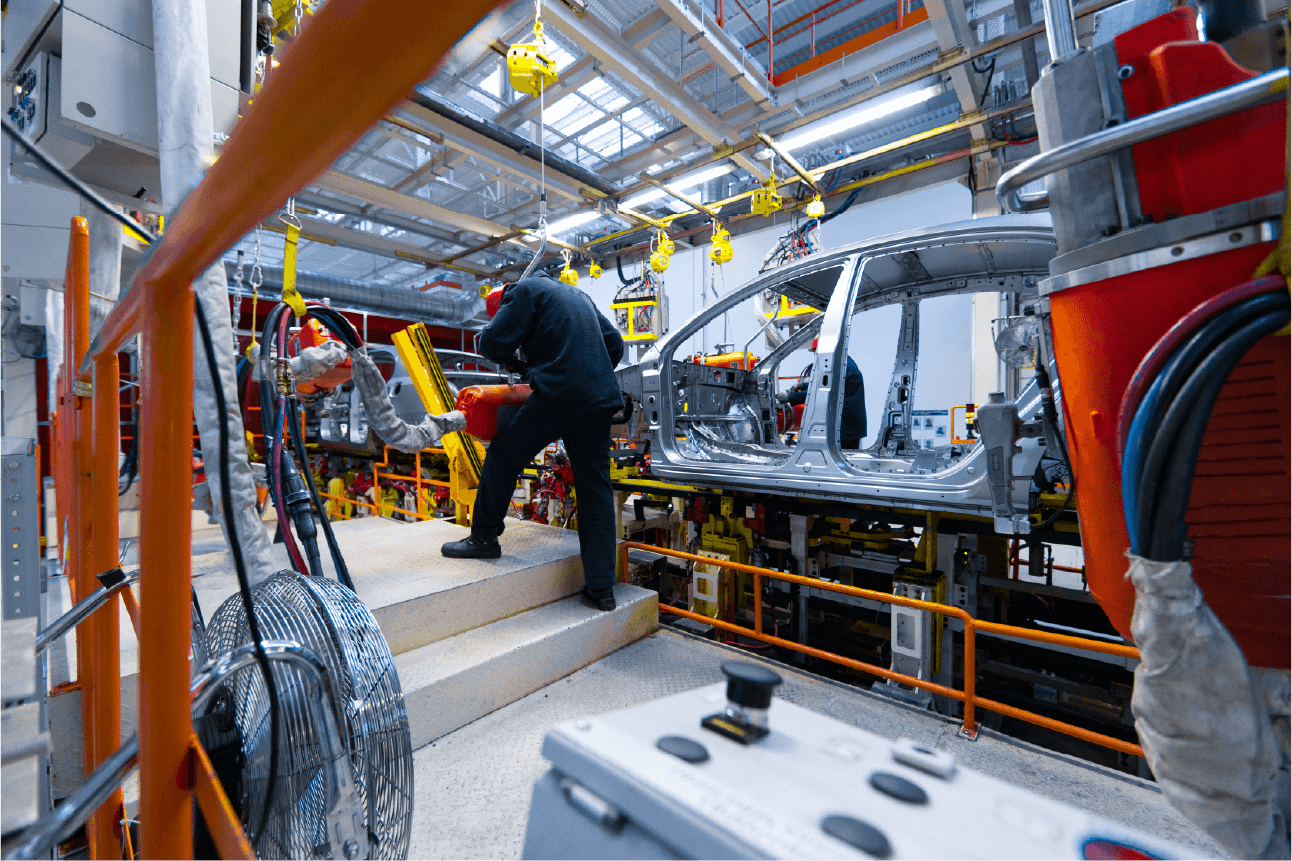Label inspection plays a pivotal role in ensuring products meet quality standards and regulations before reaching consumers. Whether it's a simple barcode, a nutritional label, or complex multilingual instructions, the accuracy and quality of labels are non-negotiable. Incorrect labels can lead to severe consequences, such as product recalls, fines, and damaged brand reputation.
This is where label inspection machines come into the picture—an essential process that safeguards against these costly mistakes.
However, traditional label inspection methods, often reliant on manual checks, have their limitations. They are time-consuming, prone to human error, and can lead to inconsistencies in quality control.
Enter AI—a game-changer in label inspection systems. By harnessing the power of artificial intelligence, manufacturers can automate the label inspection process, making it faster, more accurate, and more reliable.
AI-based label inspection systems use advanced algorithms and machine learning to detect even the smallest discrepancies on labels, ensuring only the correct ones make it to the shelves. In this blog, we will identify why AI-based label inspection is becoming indispensable in manufacturing and delve into the top benefits it offers.
Why Is Label Inspection Crucial in Manufacturing?
Label inspection is not just about verifying the aesthetics of a product; it’s about ensuring that all regulatory and compliance requirements are met. In industries like pharmaceuticals, food and beverage, and electronics, labels carry critical information that could impact health, safety, and legal standings. Incorrect or unreadable labels can lead to misinformed consumers, improper usage of products, and potential health risks. Therefore, label inspection is a critical step in maintaining the integrity of a brand and its products.
The Need for Label Inspection in Manufacturing
Traditional label inspection systems primarily rely on manual inspection methods. However, as manufacturing scales up and product lines become more diversified, these methods reveal significant drawbacks. Human inspectors, no matter how trained, can miss minor defects, leading to inconsistent quality control.
Moreover, manual inspections are slow and not scalable, posing challenges in meeting the fast-paced demands of modern manufacturing. This is why automation, particularly AI-based solutions, is becoming essential. AI-driven label inspection systems can handle large volumes with high precision, ensuring that each product meets the required standards without slowing the production process.
What is AI-Based Label Inspection?
AI-based label inspection systems are automated solutions that utilize machine learning algorithms and computer vision to examine labels on products. Unlike traditional methods, these systems can detect even the most subtle discrepancies, such as minor misprints, incorrect barcodes, or faint text.
They learn from vast datasets to recognize patterns and deviations that human eyes might overlook. This technology ensures that every label on every product is inspected with unparalleled accuracy, speed, and consistency.
Top Benefits of Using AI for Label Inspection
1. Increased Accuracy
One of the most significant benefits of AI-based label inspection systems is their ability to deliver unmatched accuracy. These systems can detect minute errors that are often missed during manual inspections, such as slight color variations, incorrect font sizes, or misaligned text. This level of precision ensures that all labels comply with industry standards and regulations, reducing the risk of costly recalls and fines.
2. Enhanced Speed and Efficiency
AI-based label inspection systems operate at speeds that far exceed human capabilities. They can inspect hundreds of labels per minute, allowing manufacturers to maintain high throughput rates without sacrificing quality. This speed not only boosts productivity but also reduces the time products spend on the production line, accelerating the overall manufacturing process.
3. Consistent Quality Control
With AI, every label is inspected under the same stringent criteria, ensuring consistent quality control across all products. Unlike human inspectors who may experience fatigue or distractions, AI systems provide continuous and reliable inspection, eliminating variations and maintaining a high standard of quality.
4. Cost Savings
By reducing the need for manual labor and minimizing the occurrence of errors, AI-based label inspection systems offer significant cost savings. Fewer errors mean lesser product recalls and minimal waste, contributing to a healthier bottom line. Additionally, the automation of label inspection equipment frees up human resources to focus on more strategic tasks, further enhancing operational efficiency.
5. Real-Time Monitoring and Feedback
AI-powered label inspection systems provide real-time monitoring and feedback, allowing manufacturers to identify and rectify issues as they arise immediately. This proactive approach helps prevent defective products from leaving the production line and enables quick adjustments to improve processes, reducing downtime and increasing overall efficiency.
6. Improved Compliance and Traceability
Ensuring compliance with industry standards and regulations is critical in manufacturing, especially in sectors like pharmaceuticals and food and beverage. AI-based label inspection systems help maintain stringent compliance by accurately checking each label against regulatory requirements. Moreover, they enhance traceability by keeping detailed records of inspection results, which can be invaluable in audits and quality assurance processes.
7. Scalability and Flexibility
AI-based label inspection systems are highly scalable and adaptable to different manufacturing environments. Whether a production line handles thousands or millions of units, AI systems can be scaled up or down to meet specific needs. They are also flexible enough to accommodate various types of labels and packaging, making them suitable for a wide range of industries and products.
Case Study
Several companies have already reaped the benefits of AI-based label inspection systems. For instance, a global beverage manufacturer implemented AI for their label inspection process, significantly reducing the number of mislabeled products.
Similarly, a pharmaceutical company adopted AI-based systems to ensure compliance with strict labeling regulations, leading to fewer recalls and better customer trust. These examples illustrate how AI is transforming label inspection across industries, enhancing both quality and efficiency.
How to Implement AI for Label Inspection in the Manufacturing Process?
Implementing AI-based label inspection systems involves integrating advanced technology like Loopr IQ Inspect into existing manufacturing processes. This integration requires assessing current inspection practices, identifying areas for improvement, and training AI models to recognize the specific requirements of each label type. It is crucial to work with experienced providers to customize the solution for your specific needs, ensuring seamless implementation and optimal results.
Conclusion
The integration of AI in label inspection systems is revolutionizing how manufacturers approach quality control. By providing increased accuracy, speed, and consistency, AI-based systems address the limitations of traditional inspection methods, driving efficiency and cost savings.
As industries continue to evolve, embracing AI for label inspection will be key to staying competitive and ensuring that products meet the highest standards of quality and compliance.
FAQ
1. What are the types of labels?
Labels can vary from simple barcodes and QR codes to more complex designs like nutritional information, safety instructions, and multilingual labels. Each type serves a unique purpose and requires different inspection criteria.
2. What is a silver label inspection?
Silver label inspection refers to the quality control process for labels with metallic or silver elements. These labels require special attention as they are prone to reflectivity issues, which can affect readability and scanner accuracy.
3. What are the inspection criteria for labels?
Inspection criteria for labels include text legibility, barcode readability, correct color codes, alignment, and placement. Labels must also meet specific regulatory standards, depending on the industry.


%201.svg)

.svg)




.png)

